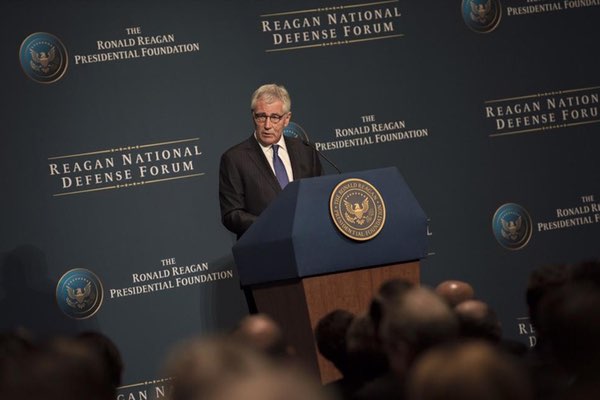How the Defense Innovation Initiative can help deter a “space Pearl Harbor”by Brian Chow
|
| Having specific, big goals can guide commercial innovation and technologies in dealing with current and future threats under tight defense budgets. Deterring a space Pearl Harbor can serve as such a goal. |
DII has two key efforts. First, the Defense Innovation Unit-Experimental (DIUx) is “designed to create a hub for increased communication with, knowledge of, and access to innovating, high-tech start-up companies and entrepreneurs and their leading edge technologies.” Second, the Long-Range Research and Development Planning Program (LRRDPP) is “designed to help the Department better understand and prioritize new or unconventional application of technology in an effort to provide the U.S. with significant military technological advantage into the future.”
To guide the DII, Defense Secretary Carter has identified four contingencies—North Korean invasion of South Korea, war with Iran, Chinese invasion of Taiwan, and Russia aggression—and a condition, global terrorism. However, those who rarely work with the Defense Department, but who DII wants to attract, need to have this top-level guidance supplemented by more concrete big goals so as to aim their leading edge technologies at. These clear goals will facilitate talented people from inside and outside government to assemble the right technologies to attain each goal most efficiently.
Having specific, big goals can guide commercial innovation and technologies in dealing with current and future threats under tight defense budgets. Deterring a space Pearl Harbor can serve as such a goal. At the same time, DII can provide access to the commercial innovation and technologies that this deterrence needs. Therefore, connecting DII and space Pearl Harbor deterrence is a win-win combination.
A goal-oriented approach has been used successfully for major initiatives in the past. The Manhattan Project had a difficult but achievable goal of making nuclear weapon. Also, Kennedy’s program to claim US leadership in space exploration had an easily understandable target of putting a human on the Moon by the end of the 1960s. Further, once a difficult goal is attained, the innovation and technologies used will have beneficial spin-offs. The Defense Innovation Marketplace has been established with various ways to attract talent. Still, soliciting commercial innovation with multiple specific big goals should be added to the marketplace, as this way generates excitement, easily recognizable achievement and enduring public support.
In a set of three recent commentaries (“Avoiding Space War Needs a New Approach”, “Fund Pre-emptive Self-Defense in Space”, and “China’s new space threat and the justification of US pre-emptive self-defense”), I argued that space objects capable of close proximity operations and equipped with a robotic arm, which are being developed and tested in China and Russia, could pose a new kind of serious threat—a space Pearl Harbor—to the US. These space objects could be placed in orbit during peacetime. In a crisis, such as China planning to invade Taiwan, as Secretary Carter has emphasized to defend against, these space objects could be maneuvered to tailgate our satellites. China could deter the US intervention by demonstrating that its space stalkers could almost simultaneously attack several or more critical satellites from such a close proximity that the US would not have time to save them.
| This goal of avoiding a space Pearl Harbor can be attained, but require concerted efforts. These efforts draw on the ingenuity and the technologies from the commercial sector and the Defense Department especially its laboratories. |
Deterring and defeating a space Pearl Harbor needs many commercial disruptive technologies. Mounting attacks from close proximity provides only a short time for the US to detect and defeat the attacks. The US needs to monitor space objects and detect space stalkers in near real-time. Performing this monitoring task successfully would require the orchestration of advanced senor technologies, visualization, advanced computing, big-data analytics, and artificial intelligence. The commercial sector excels in these technologies. After detection, the US still needs to disable the space stalker attacks within the short time window and without generating space debris. Better yet, the disabling should be reversible so that the space stalkers are not harmed permanently. This disabling task would require the aforementioned technologies. Also, it would require robotics, autonomous operating guidance and control systems, and miniaturization. These technologies have been highlighted by Defense Deputy Secretary Robert Work, who has been guiding the DII for both Secretaries Hagel and Carter, as some of the commercial and academic innovation DII is seeking.
This goal of avoiding a space Pearl Harbor can be attained, but require concerted efforts. These efforts draw on the ingenuity and the technologies from the commercial sector and the Defense Department especially its laboratories. The US also needs to coordinate and cooperate with its allies and friends, if not its potential adversaries. Let’s proceed with this critical win-win combination for the US national security now.
